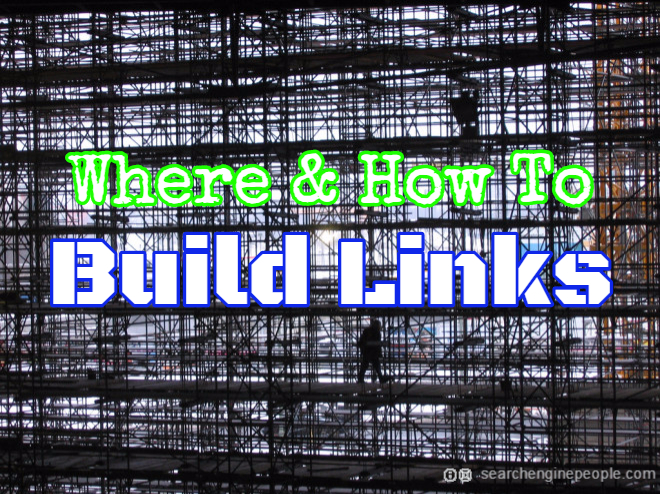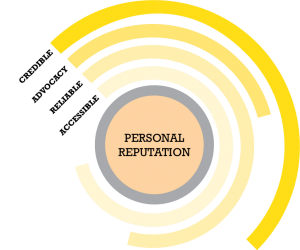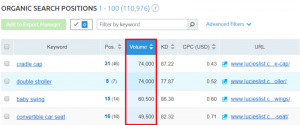
With Google penalising websites with bad backlink profiles and ‘spammy’ link building tactics, it is important to steer clear of any underhand methods that put you at risk.
In 2015, link building should all be about creating relationships, PR and increasing the authority for your brand. You may have noticed in several industries that searches for brand names are rising higher than those ‘target keywords’ we all used to chase.
With links remaining an important part of Google’s algorithm, here are a number of methods that are currently working for us and our clients:
Competitor Backlink Analysis
A competitor analysis is a good way to start. There are several tools out there you can use for this but I’ve found Majestic provides the best value.
This helps us achieve two things:
- Identify where our client’s competitors are getting their backlinks from
- Helps us to work out what marketing strategies they are using to attract their backlinks
There’s no limit to how many competitors you can check – some may be provided by your client, but when we’re competing for market share online I like to check out who are ranking highest in Google for the key terms and who has the biggest social following.
All of the data identified can go into a single spreadsheet.
The size of the industry which your clients are in will have an influence on how many link prospects you’ll be left with. It could be in the 10s, 100s or even 1000s. Microsoft Excel helps you remove duplicates quickly and easily.
Majestic will help you identify the quality of links based on their Trust Flow metrics tool: the Topical Trust Flow is well worth taking note of too. It helps having knowledge and experience too when making a judgement, but I respect not everyone has this.
Write for Authoritative Sites
Find a handful of authoritative websites in your industry with a highly-targeted and engaged community and regularly contribute to these blogs.
Build an authentic relationship with the blog owner/editor as expanding your network comes with benefits.
You don’t need to be sticking links willy-nilly back to your site in each and every blog post, but rather when there is an opportunity to add value to the readers. This additional benefit from the traditional link building approach is that you could potentially win referral traffic, conversions and maybe even long-term customers.
Do constantly produce high-quality content for these blogs if you want to keep on good terms with both the editors and the audience which will improve the chances of them sending traffic and customers your way.
Content-Earning Links
Create content that will naturally inherit links to your client’s website. This can be one of many things. Five examples:
A game
Google inherited a number of links when they made Pacman available. Later they made it available on Google Maps which earned them even more PR.
The Telegraph team are a great example of building fun little games and drawing attention to them. When British politician Ed Balls Tweeted his own name on 28 April 2011, they quickly produced a game that went viral across social media in no time, naturally inheriting some big links in the process.
You can play the game here for yourself: http://games.usvsth3m.com/edballs/.
Flagship Content
Creating the most authoritative content for any particular item is always useful for attracting links and developing loyal visitors. You may naturally pick up these citations as a result, but you can also be cheeky in finding your competitors’ backlinks and then asking if the webmasters would consider linking to your content as well, or instead, as it’s of higher quality and more useful to their audience.
Data
People love data. Data is a very good tool to get links and social shares as well as having the potential to be newsworthy.
There are many ways you can get data for any of your clients – analytics, surveys, the Freedom of Information Act and even improving or refreshing data that already exists.
Of course, you or your client may have their own data available to share.
Gadgets
This could be a spreadsheet to work out how much money you could save each month, a calculator that works out your tax, or a flight checker that works out the cheapest date to fly to your holiday destination. There are many possibilities out there for you and your business to create a gadget that will be of benefit to a potential new audience.
Create something unique
This can be on the internet or in real-life. A product or a modified accessory – let your creative juices flow!
The team at Bathrooms.com got a lot of attention when they created their 9.4 million calorie ‘Chocolate Bathroom‘ last year.
Dublin creative agency In the Company of Huskies recently won an award at the EU Search Awards for their World War 1 in Colour campaign for the Open University. All photos from the war are in black and white, so they teamed up with a photo restoration expert who re-mastered and colourised each image to provide what turned out to be a popular campaign.
These are just two of many examples out there of creating something that hasn’t been done or thought of before and which can be really beneficial in increasing your visibility.
Content in Demand
Trending topics and upcoming events are useful to build content around. Look at what content is attracting social shares and links in your industry, replicate it (but make it at least twice as good) and then share it.
You may want to contact those who have shared and linked to the original piece to let them know that you’ve created something mind-blowing in comparison and that you think it would be of value to them.
Twitter and Buzzsumo are both useful for finding out what is popular.
Link Reclamation
Tidy up your client’s website by locating pages that no longer exist but which have links pointing to them and then redirecting these pages to the most appropriate page on the site.
A link reclamation of your own site is one the easiest quick wins for any new client you take on board.
You can find out if your 404 pages that have inbound links by using Majestic:

Random Acts of Kindness
Perhaps you have identified an opportunity where you can help someone with their website – a typo, a broken link, a misquote or something to improve a blog post.
Even if there is no opportunity to squeeze a link back to your site or get a shout out, karma makes its way around. This is certainly a useful method when you’re contacting authorities as they won’t want errors on their blog posts and most of them will be kind enough to respond to you… a small opportunity to build a relationship upon.
Build Your Site for Your Target Audience
If you concentrate on building your website for your audience, and to help attract a bigger audience, then inheriting links can be second nature.
Sometimes it’s not worth trying to game Google by running the risk of getting your website burned – after all Google is often updating its algorithm, and if you or your marketing team aren’t up-to-date, you could be running the risk of a penalty.
Build your brand using methods you would use offline, or how the likes of major companies did before the internet craze – PR, networking, having a great product (content) and the like.
If you create a brand then you’re essentially future-proofing yourself from relying on Google rankings.
Lists
Still one of the most popular types of content on the web are lists. It’s a simple strategy to generate links, social shares and traffic.
Lists can be many things – industry roundups, quotes from authoritative figures, or favourite products. They can be built around any subject, can be updated and improved versions of older lists – the ideas are endless!
Conclusion
Links still remain very important in Google’s search algorithm but in a different way to how it was four or so years ago. No longer are we solely aiming for number one position in Google for money keywords, instead we’re looking to build links and relationships and create PR that will help build our clients’ brands and increase their visibility in the process.
* Leader image by tuppus
(273)






